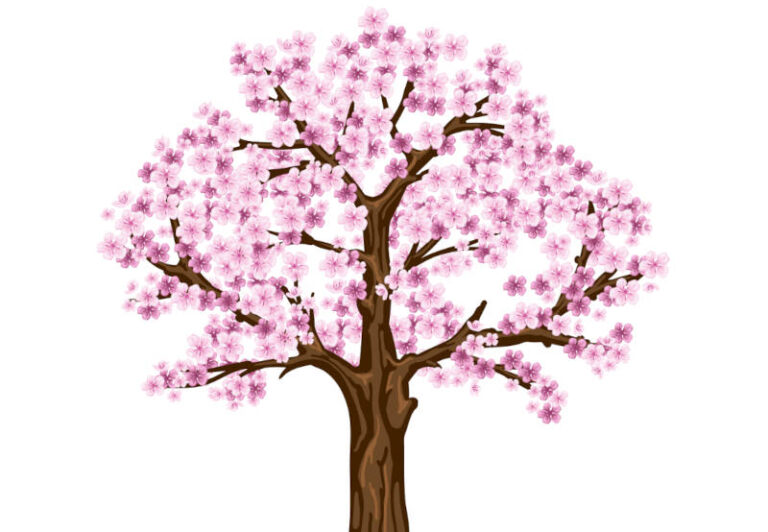A symbol of spring, beauty and renewal, cherry blossoms catch the eye of everyone when they’re in full bloom. Many artists test themselves with blossom trees, and you can get your children involved in this ancient art with this super-straightforward activity.

How to paint child-friendly cherry blossoms
- White, dark pink, light pink and brown paint
- Cotton buds
- Card: light for the back and brown for the trunk
There are two ways to go about making the trunk of your cherry blossom trees. To make it more of a family keepsake, you can trace around the children’s hands and a little of their arms on brown card then carefully cut them out. Once they’re stuck to the backing card, you’re all set to paint!
If you don’t have the time for the hand-trunks, the children can get straight to painting trunks instead. A brown line up the middle and a few brown lines coming out of the top, and you’ve got the start of your tree.
Painting the cherry blossoms couldn’t be simpler. Start with dark pink paint and add dots all over the top part of the trunk (the fingers and wrist), like the image at the top of this page.
Use the cotton buds for this to create fine(ish) dots, or let the children get messy and use their fingers!
Next, take the light pink paint and repeat the process. They can dot in new places, over the dark pink paint, or even the bottom of the card to show falling blossoms!
Lastly it’s the white paint, and again it’s just dots all over the place. When everyone’s done, put the card somewhere safe to dry, clean everyone up, and voila – you’re a classroom of painting maestros!
Top Tip: Parents and practitioners, to engage and enjoy the activity with your child – why not paint one yourself!
Development Factors for Parents
- Fine Motor Skills
- To encourage a pincer grip
- To aid controlled hand movements
- Communicating
- To mimic sounds and basic words
- To support conversation and understanding of tasks
- To spark conversations in relation to real life activities
- Bonding and character building
- To stimulate imagination and character
- To build interaction both one-to-one and/or in small groups
- Self-care
- Washing your hands can be a development activity too!
Early Years Framework Areas of Learning and Development for Practitioners
- Physical Development
- Expressive Arts and Design
- Communication and Language
- Personal, Social and Emotional Development
- Mathematics
- Understanding of the world
Are you struggling to motivate your practitioners?
Perhaps you want to extend your child’s learning at home? Our team of Early Years experts are igniting knowledge and excitement back into the childcare sector!
Check out our activity plans, like us on Facebook, follow us on Twitter but most importantly, come and Blossom with us!